MCQ (Solution) - The Invisible Living World: Beyond Our Naked Eye | Science Curiosity Class 8 - New NCERT PDF Download
Question 1:
Which observation best explains why a round-bottom flask filled with water magnifies printed letters beneath it?
Option A: Water absorbs light and increases contrast
Option B: Air bubbles form tiny lenses inside the water
Option C: Glass reflects most of the incident light
Option D: The curved flask-water system acts like a convex lens
 View Answer
View Answer 
Answer: Option D
Solution:
- The flask filled with water behaves like a convex lens (thicker in the middle, thinner at edges), bending light rays to converge and thus producing a magnified image of the letters underneath.
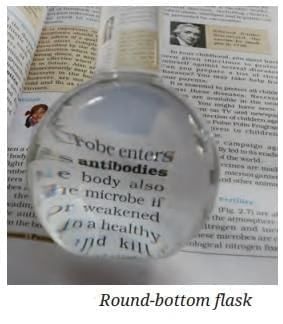
- This directly connects to the chapter’s explanation that lentil-shaped glass pieces (lenses) make small objects look bigger by refraction.
- Why others are incorrect:
A: Absorption reduces brightness, not magnification.
B: Air bubbles are incidental and typically distort rather than produce controlled magnification.
C: Reflection alone does not enlarge images.
Question 2:
Robert Hooke’s most important contribution was that he:
Option A: Saw living bacteria in cork
Option B: Coined the term “cell” after viewing cork slices
Option C: Invented the electron microscope
Option D: Proved that all microorganisms cause disease
 View Answer
View Answer 
Answer: Option B
Solution:
- Hooke viewed thin slices of cork with a 200–300x microscope and observed a honeycomb-like array of compartments, which he named “cells,” marking the term’s first use in biology.
- This observation was structural, not about living activity in cork (which was dead tissue in his sample).
- Why others are incorrect:
A: He did not see live bacteria in cork; Leeuwenhoek later described bacteria.
C: Electron microscopes came centuries later.
D: The chapter emphasizes both helpful and harmful microbes; Hooke did not make such a sweeping claim.
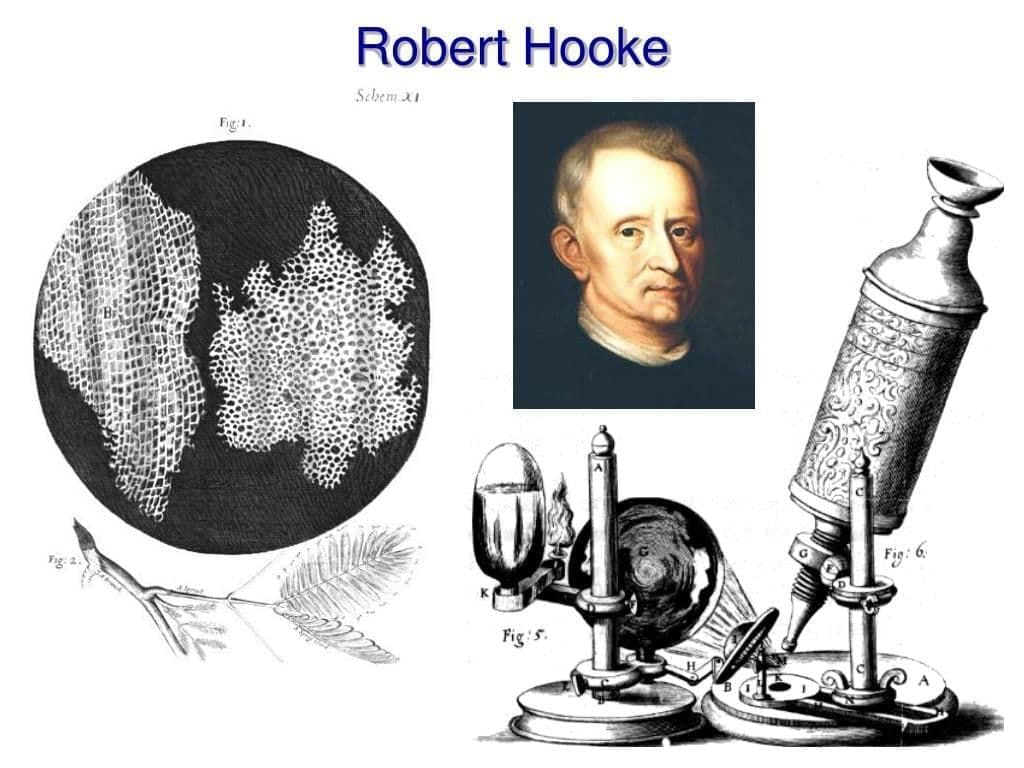
Question 3:
In the onion peel preparation, the purpose of adding safranin is to:
Option A: Kill microorganisms present on the peel
Option B: Dehydrate the tissue for permanent mounting
Option C: Increase contrast to visualize cell parts clearly
Option D: Prevent air bubbles under the coverslip
 View Answer
View Answer 
Answer: Option C
Solution:
- Safranin is a stain that binds to cellular components and increases contrast, allowing structures like the cell wall, cytoplasm, and nucleus to be seen more distinctly under the microscope.
- The protocol then rinses excess stain and adds glycerin for clarity and moisture control.
- Why others are incorrect: A: Staining is for visibility, not sterilization. B: Dehydration is for permanent slides; this is a temporary wet mount. D: Careful lowering of the coverslip minimizes bubbles; stain doesn’t remove them.
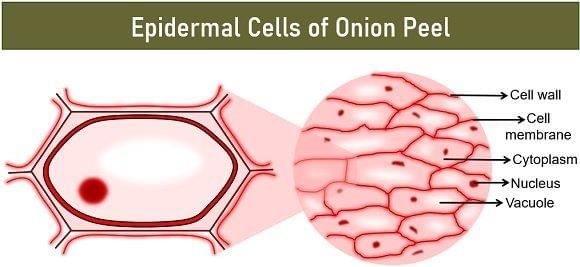
Question 4:
Which feature directly distinguishes typical bacterial cells from plant and animal cells as described?
Option A: Presence of chloroplasts
Option B: Lack of a cell membrane
Option C: Nucleoid instead of a membrane-bound nucleus
Option D: Large central vacuole
 View Answer
View Answer 
Answer: Option C
Solution:
- Bacteria possess a nucleoid—DNA not enclosed by a nuclear membrane—unlike plant and animal cells which have a membrane-bound nucleus.
- They may have a cell wall but lack organelles like chloroplasts found in plant cells.
- Why others are incorrect: A: Chloroplasts occur in plant cells, not bacteria. B: All cells have a cell membrane. D: A large central vacuole is characteristic of many plant cells, not bacteria.
Question 5:
Which structural difference between onion peel cells and human cheek cells is correctly matched with its function?
Option A: Onion cell wall — provides rigidity and compact arrangement
Option B: Cheek cell chloroplast — enables photosynthesis in mouth lining
Option C: Onion cell nucleoid — controls all cell activities
Option D: Cheek cell large vacuole — maintains plant cell shape
 View Answer
View Answer 
Answer: Option A
Solution:
- Onion peel cells (plant) have a cell wall that provides rigidity, support, and compact arrangement; cheek cells (animal) lack a cell wall and are thin/flat for protective lining.
- Both have a nucleus and cytoplasm, but plant cells also show plastids and large vacuoles.
- Why others are incorrect: B: Animal cheek cells lack chloroplasts. C: Plant cells have a membrane-bound nucleus; a nucleoid is bacterial. D: Large vacuoles are a plant cell feature, not animal cheek cells.
Question 6:
Which sequence correctly represents the levels of organization in multicellular organisms?
Option A: Organ → Tissue → Cell → Organ system → Organism
Option B: Cell → Tissue → Organ → Organ system → Organism
Option C: Tissue → Cell → Organ system → Organ → Organism
Option D: Cell → Organ → Tissue → Organism → Organ system
 View Answer
View Answer 
Answer: Option B
Solution:
- The chapter states the hierarchy as: Cell → Tissue → Organ → Organ system → Organism, building complexity from basic units to the whole living being.
- This mirrors how similar cells form tissues, tissues combine into organs, organs coordinate in systems.
- Why others are incorrect: A, C, D misorder key steps, breaking the logical progression of biological organization.
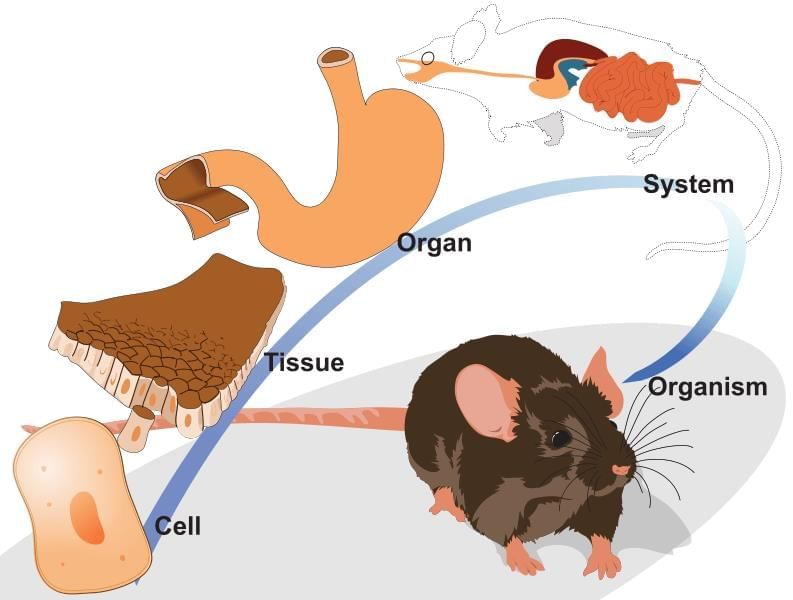 Level of Organization
Level of Organization
Question 7:
What is the primary role of microorganisms in turning kitchen peels into dark manure?
Option A: They photosynthesize to add sugars to soil
Option B: They decompose complex matter into nutrient-rich simpler substances
Option C: They remove all minerals from soil
Option D: They evaporate water to dry the waste
 View Answer
View Answer 
Answer: Option B
Solution:
- Decomposer microbes (bacteria and fungi) break down plant waste into simpler nutrient-rich matter, returning nutrients to the soil and increasing fertility.
- Optimal temperature and moisture accelerate this composting process.
- Why others are incorrect: A: Photosynthesis is done by photosynthetic organisms; composting is decomposition. C: They recycle, not remove all minerals. D: Evaporation alone doesn’t create manure.
Question 8:
Why do pickles and murabbas resist microbial spoilage?
Option A: They are kept in darkness
Option B: They are boiled at very high temperatures daily
Option C: They contain natural chlorophyll
Option D: High concentrations of salt or sugar act as preservatives
 View Answer
View Answer 
Answer: Option D
Solution:
- High osmotic conditions due to salt or sugar inhibit microbial growth by drawing water out of microbial cells, limiting their activity and reproduction.
- This is a traditional preservation strategy referenced in the chapter’s discussion on spoilage resistance.
- Why others are incorrect:
A: Light alone isn’t the key factor.
B: Daily boiling is not a stated or practical preservation method for pickles/murabbas.
C: Chlorophyll is irrelevant to preservation.
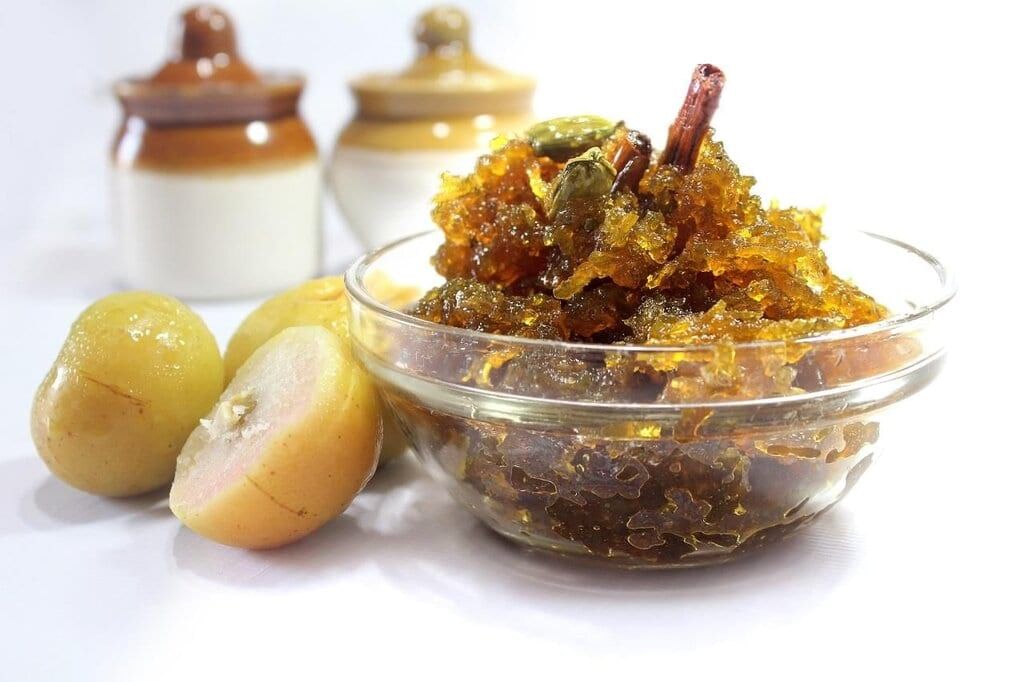 Murabbas and Pickles
Murabbas and Pickles
Question 9:
Which combination most directly causes the dough in bowl to rise?
Option A: Cold water and salt release oxygen
Option B: Warm water and sugar fuel yeast to produce CO₂
Option C: Yeast produces lactic acid to form bubbles
Option D: Glycerin traps air in the dough
 View Answer
View Answer 
Answer: Option B
Solution:
- Yeast respires using sugar, especially in warm conditions, releasing carbon dioxide that forms bubbles, making dough soft and fluffy; a small amount of alcohol is also produced.
- This is the basis of leavening in bread, cakes, and related foods.
- Why others are incorrect: A: Cold inhibits yeast activity; salt doesn’t release oxygen. C: Lactic acid is produced by Lactobacillus (curd/batter), not yeast for rising. D: Glycerin isn’t used here; it is used in slide mounts.
Question 10:
Which statement about microalgae is most accurate?
Option A: They produce a significant portion of Earth’s oxygen through photosynthesis
Option B: They are animal-like and feed only on other organisms
Option C: They survive only in oceans, not in soil or air
Option D: They are harmful to human health and have no uses
 View Answer
View Answer 
Answer: Option A
Solution:
- Microalgae are photosynthetic and release oxygen, contributing substantially to global oxygen production; examples include Spirulina, Chlorella, and Diatoms.
- They are used as supplements, in water cleaning, and biofuel production; conserving them supports environmental balance.
- Why others are incorrect: B: They are plant-like and often autotrophic. C: They can also live in soil, air, and on trees. D: Many are beneficial and nutritionally valuable.
Question 11:
Which pairing correctly matches a microorganism with its beneficial role?
Option A: Rhizobium — causes fruit spoilage
Option B: Lactobacillus — sets milk into curd via lactic acid
Option C: Yeast — fixes nitrogen in root nodules
Option D: Spirulina — decomposes leaf litter
 View Answer
View Answer 
Answer: Option B
Solution:
- Lactobacillus ferments lactose to lactic acid, curdling milk and imparting sourness; it thrives in warm conditions.
- Other examples: Rhizobium fixes nitrogen in legume root nodules; yeast leavens dough; fungi/bacteria decompose wastes; Spirulina is a nutritious microalga “superfood.”
- Why others are incorrect: A: Rhizobium is beneficial nitrogen fixer. C: Yeast is a fungus used in leavening/fermentation, not nitrogen fixation. D: Spirulina is used for nutrition, not primarily as a decomposer.
Question 12:
Which inference best explains why dough rises more in a warm place?
Option A: Warmth increases yeast metabolic activity up to an optimum, boosting CO₂ output
Option B: Warmth denatures yeast enzymes, accelerating gas release
Option C: Warmth converts sugar directly into oxygen
Option D: Warmth evaporates water, forming bubbles in dough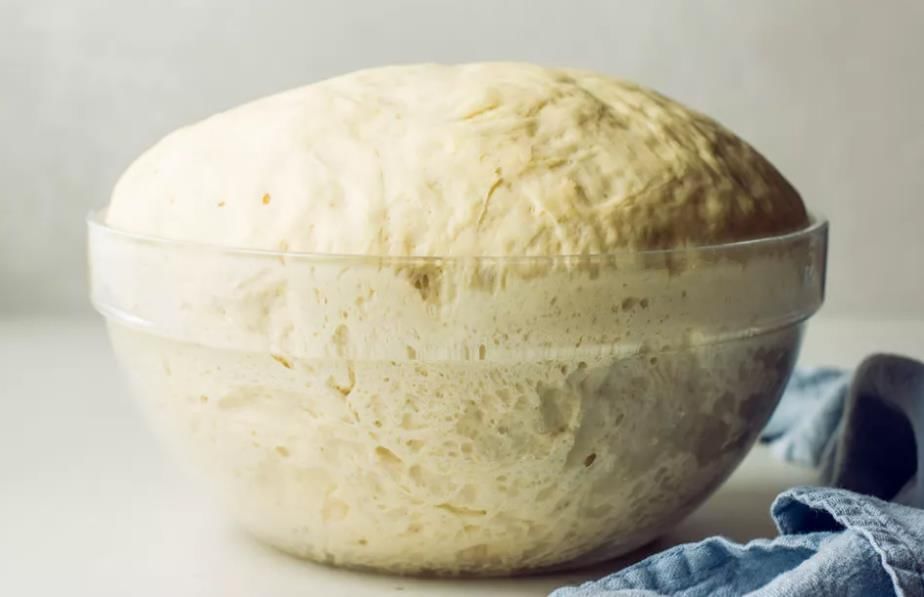 Raised Dough
Raised Dough
 View Answer
View Answer 
Answer: Option A
Solution:
- Within an optimal range, higher temperature increases yeast enzyme activity and fermentation rate, producing more CO₂ that gets trapped in the dough network.
- This principle of “optimal temperature” is common to microbial growth discussed across activities.
- Why others are incorrect: B: Denaturation reduces activity; beyond optimum, yeast activity declines. C: Sugar doesn’t become oxygen. D: Evaporation doesn’t generate fermentation bubbles.
Question 13:
Which statement about “cell as the basic unit of life” is most consistent?
Option A: Only animals are made of cells; plants are not
Option B: A single cell cannot perform all life functions in any organism
Option C: Multicellular organisms have specialized cells organized into tissues, organs, and systems
Option D: Bacteria have chloroplasts like plant cells
 View Answer
View Answer 
Answer: Option C
Solution:
- The chapter outlines the hierarchy from cells to tissues to organs to organ systems to organism, emphasizing specialization and cooperation in multicellular life.
- Unicellular organisms (e.g., bacteria, protozoa) do perform all life functions within one cell; multicellular organisms distribute functions across specialized cell types.
- Why others are incorrect: A: Plants are cellular. B: Unicellular microbes contradict this claim. D: Bacteria lack chloroplasts and a membrane-bound nucleus.
|
54 videos|281 docs|13 tests
|
FAQs on MCQ (Solution) - The Invisible Living World: Beyond Our Naked Eye - Science Curiosity Class 8 - New NCERT
| 1. What is meant by the term "invisible living world" in the context of microorganisms? |  |
| 2. How do microorganisms contribute to the environment? |  |
| 3. What are some examples of beneficial microorganisms and their uses? |  |
| 4. What role do microorganisms play in human health? |  |
| 5. How are microorganisms studied, given their tiny size? |  |





















